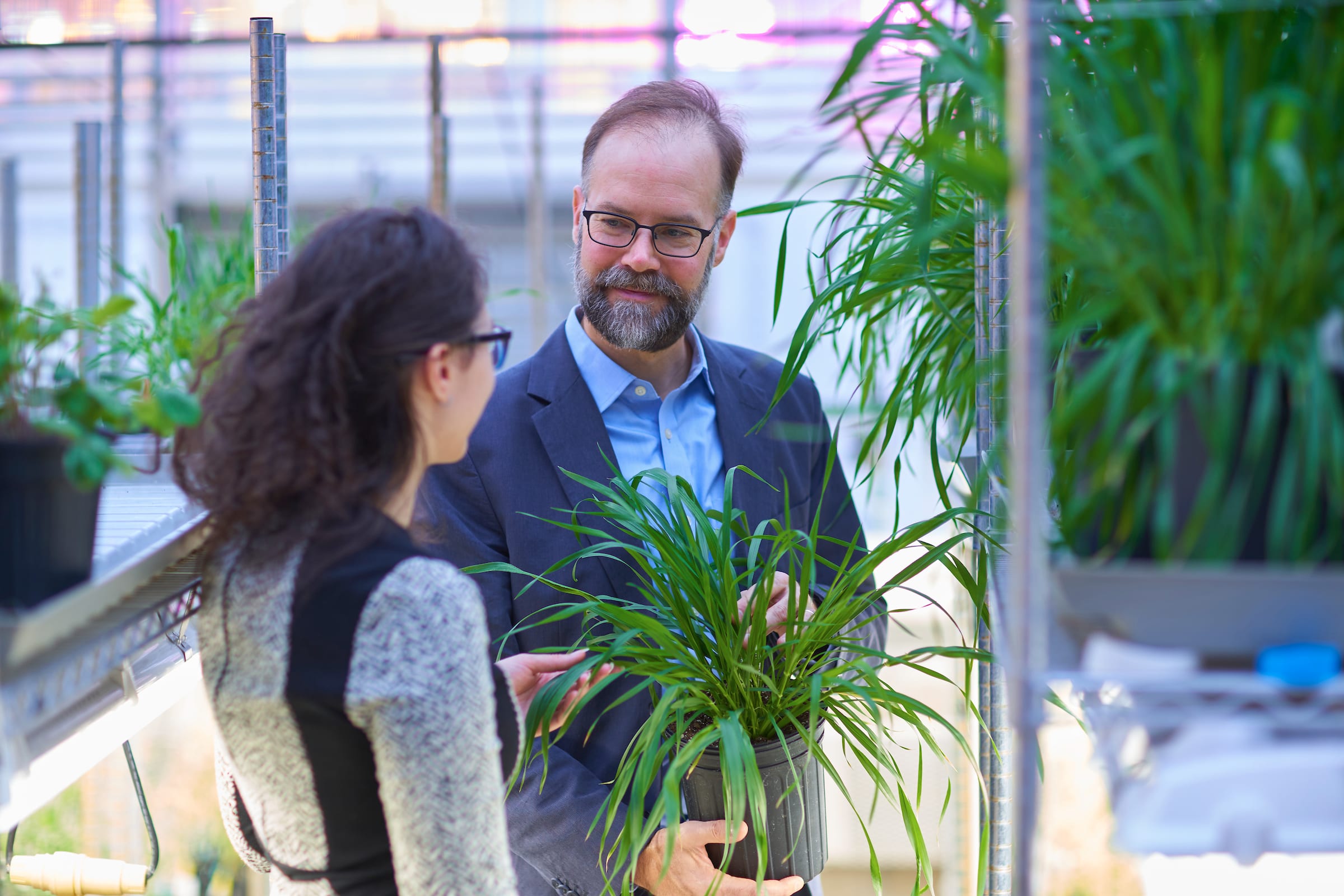St. Louis, Missouri, USA
June 11, 2020

Small RNAs are key regulators involved in plant growth and development. Two groups of small RNAs are abundant during development of pollen in the anthers – a critical process for reproductive success. A research collaboration has demonstrated the function of a genetic pathway for anther development, with this pathway proven in 2019 work to be present widely in the flowering plants that evolved over 200 million years ago. The research team was led by Blake Meyers, Ph.D., member, Donald Danforth Plant Science Center and professor, Division of Plant Sciences, University of Missouri, and Virginia Walbot, Ph.D., Professor of Biology, Stanford University. Their findings, “Dicer-like 5deficiency confers temperature-sensitive male sterility in maize” were published in the journal, Nature Communications.
Unexpectedly, their research uncovered an environmentally sensitive male sterile phenotype. By using mutants and knocking out one of the pathways, the research team produced plants that failed to make pollen, but when they lowered the temperature, they found they could recover full male fertility. This ability to turn on or turn off pollen production in different conditions could be useful for seed production. The team could also attribute the function of this pathway in anther development, an observation previously missing but important. These results are important companions to a previously published discovery, which described the evolutionary distribution of the pathway across flowering plants, “24-nt reproductive phasiRNAs are broadly present in angiosperms,” also published in the journal Nature Communications.
“Putting these two discoveries together, we can understand the role these molecules play is important for full male fertility in maize, plus, the pathway first evolved with flowering plants,” said Meyers. “Understanding the genetic mechanisms by which flowers develop is important for improving crop yields and breeding better varieties, particularly for making the high-yielding hybrid crops that support modern agriculture.”
The research team will continue to work to understand why there is an environmentally-sensitive response to changes in this pathway, and what exactly is the molecular mechanism that leads to this male sterility in the absence of this small RNA pathway. Work in a separately funded project is examining if modulation of this pathway could be used to regulate pollen development in other crops, for the improvement of seed production and crop yield.
The authors include co-first authors, Chong Teng, Ph.D., postdoctoral associate in the Meyers lab and Han Zhang, Ph.D. former postdoctoral associate in the Walbot lab. Also contributing were Kun Huang, Ph.D., postdoctoral associate in the Meyers lab, and Reza Hammond, Ph.D., former graduate student in the Meyers lab. The work is funded by the National Science Foundation.
About The Donald Danforth Plant Science Center
Founded in 1998, the Donald Danforth Plant Science Center is a not-for-profit research institute with a mission to improve the human condition through plant science. Research, education and outreach aim to have impact at the nexus of food security and the environment, and position the St. Louis region as a world center for plant science. The Center’s work is funded through competitive grants from many sources, including the National Institutes of Health, U.S. Department of Energy, National Science Foundation, and the Bill & Melinda Gates Foundation. Follow us on Twitter at @DanforthCenter.